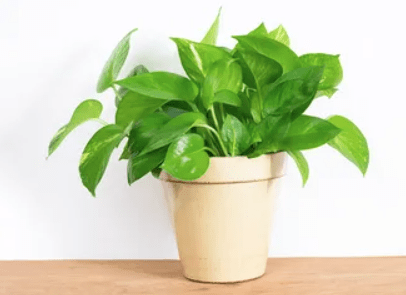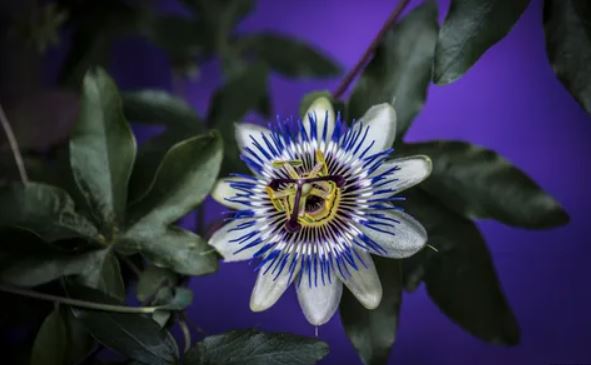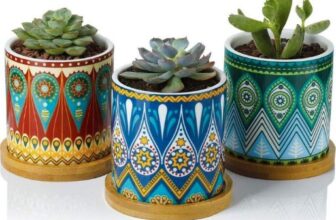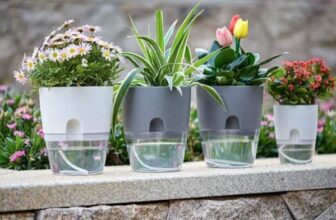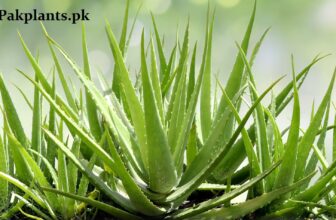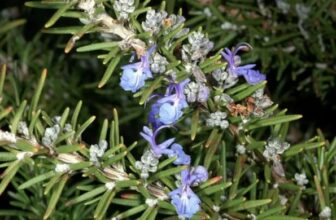Indoor plants/House Plant
Houseplants can bring color, style, and warmt your home. They don’t need more care and need only small space like small space with few windows.corner tables or shelves.
Benefits of indoor plants
Spending time with plants can increase self-esteem and life satisfaction. Houseplants encourage feelings of pleasure and provide relief. Here are some additional benefits of Indoor Plants Pakistan
Purify the air
According to researchers, homes have 20% higher concentrations of carbon dioxide than the outdoors. Indoor plants help mitigate this by absorbing carbon dioxide and releasing oxygen.
Moreover indoor plants absorb toxic substances such as formaldehyde, trichloroethylene, and benzene from the air in homes, acting as natural air cleaners. They can reduce indoor dust by up to 20%. Additionally, plants release water vapor into the air, increasing humidity. This can help improve respiratory and skin health by offsetting the drying effects of heating systems, providing significant benefits to those with respiratory issues, headaches, and allergies.
Improving your mood
Research shows that plants provide positive energy and happiness, leading to a better state of mind and an improved mood.
Multiple studies show that proximity to plants helps improve concentration and elevate mood. Research indicates that indoor plants enhance employee performance. Consequently, many offices incorporate indoor plants as integral elements. Besides providing a beautiful environment, plants help employees feel better during work.
Boosting healing and pain tolerance
Plants can help speed up recovery from surgeries, injuries, and illnesses. Research indicates that patients recovering from various types of surgery recovered faster and needed less pain medication when they were exposed to flowering plants compared to those who were not.
Control anxiety and stress
There is scientific evidence that being around plants can reduce blood pressure and heart rate as well. There are even studies going on now that are testing to see whether having plants nearby in a hospital room can actually help patients better manage their pain.
Researchers have reported that working with plants soothes individuals and lowers blood pressure, suggesting that indoor plants can reduce both physiological and psychological stress. In another study, Melinda Knuth, a horticulturist at North Carolina State University, found that plants in our surroundings help balance cortisol levels, which reduces stress hormones. Additionally, a study conducted during stay-at-home orders in Bulgaria revealed that people with houseplants or a garden experienced fewer symptoms of depression and anxiety compared to those without.
They can increase happiness and life satisfaction
According to a study, people who spent 5-10 minutes in a room with plants reported feeling happier than those who were not in such an environment. The study found that purple and green plants were particularly effective at reducing negative feelings, including fear and anxiety. Additionally, they have a calming effect, even helping to soothe anger.
They help improve your mental health
Indoor plantslike Lavender, jasmine, and aloe vera plants can make you feel happier by adding a vibrant touch of green and a pleasant scent, bringing a bit of the outdoors inside. This helps make a room feel more welcoming, calm, and open. Additionally, indoor plants release more oxygen into the air, providing a natural boost to your body and improving its efficiency. As a result, your brain feels less tired and you experience less fatigue.
Help You Sleep
Plants can help reduce stress levels, which is beneficial if you have trouble sleeping because your mind can’t quiet down. Certain plants, such as lavender, jasmine, and silver heart, can be particularly therapeutic due to their calming scents.
Reduce the risk of headaches
Instead of Daily cleaning we have certain types of Pollutant and toxic chemical in our homes by different sources that results in stress and headache.The indoor plats help to overcome the headaches by purifying the air.
How to choose indoor
Although there are lot of choices for house plant but to choose the right plant for the right space, is main phenomena in indoor gardening. You have to choose the plant that matches with your home conditions and your schedule. Survival of plants depened upon the right conditions where you keep your plant.
With many options available, indoor plants come in various shapes and sizes, from climbers to creepers, and from small plants to those with large leaves. From easy-care pothos to colorful prayer plants to high-maintenance lilies, we’ve got the best indoor plants for every type of home.
There are easy indoor plants for beginners, such as monstera, kentia palm, pothos, ferns, and calatheas. Although there are many choices for house plants, selecting the right plant for the right space is crucial in indoor gardening. You need to choose a plant that matches your home conditions and your schedule. The survival of plants depends on providing the right conditions for them.
How to care Indoor plants
Avoid overwatering
The most important aspect of indoor plant care is how you water them. Overwatering can be lethal, causing indoor plants to turn yellow and start to decay. Since the rate of evaporation for indoor plants is slow, they don’t need much water. The best way to tell if your houseplant needs watering is to monitor the soil. You can lift the plant; wet soil will make it heavier than dry soil. Alternatively, you can insert your finger into the soil or use a moisture meter to check.
Keep drainage Hole
Often, indoor plants are kept in containers bought from the market due to their elegance, but these containers might not have drainage holes. Always ensure there are drainage holes at the bottom of the pot. These are crucial for allowing excess water to escape.Keep suaser under pot.Water collecting in the saucer under the pot indicates that the soil has more than enough water.
Use rain water when possible
During the rainy season, you can place your pots outside for a good bath and to absorb rainwater. Rainwater is beneficial for indoor plants. You can also collect rainwater in a bottle and use it to water your plants later.
Effect of season on watering
Water needs change throughout the year. Plants need less water, about twice a month, in the winter because their growth and evaporation rates slow down. If the soil dries out quickly, they may need a bit more water. Dropped leaves are a sign of a thirsty plant. Warmer temperatures cause water to be absorbed more quickly.
Where to place your Indoor plants
Many indoor plants originate from the tropics. This provides us with a diverse selection of plant shapes and growth habits to choose from, but it also means these indoorplants often require warm temperatures and possibly a humid environment.
Get the light right
Choose plants based on your light. If you want to place your plants by a window, choose them based on the window’s orientation. If you’re unsure, determine which direction your window faces then follows the chart
- South-facing windows provide bright light.
- East and west-facing windows offer moderate light.
- North-facing windows receive low light.
Add curtains to diffuse intense light if needed. Monitor your plants’ light requirements and adjust their placement if they are in very bright or very low light conditions.
Although indoor plants don’t need much light but right amount of light is important for these plants. Most of them can be placed near window but this is not true for every indoor plants as some indoor plants cannot tolerate the heat and direct light.
Move your plant
Different areas of a home vary in temperature, light, humidity, drafts, and moisture. What is the best place for your indoor plant? It can be determined by changing its location to see where it grows best. If a plant is not thriving, try moving it to another room or location.
Get them some fresh air
To avoid the accumulation of carbon dioxide, especially during nighttime, open windows near your houseplants so they can breathe in fresh air.
Prune and repoting
Change the soil in your pot every year to provide more space for plant growth and introduce new nutrients for better health. Use a pot that is 1-3 inches larger in diameter than the previous one to ensure your plant has enough room to continue growing.
If you notice roots developing on top of the soil or growing through the drainage holes at the bottom of the pot, it’s time to transfer the plant to a larger pot.
Remove dead or dying leaves to safe the energy of plants for growing leaves.
Keep clean your in door plants
Keep your indoor plants tidy by removing dust with a cloth or giving them a gentle shower. Dusty leaves can’t respire properly. Additionally, regularly check for any signs of bacterial or fungal infections.
Keep temperatures stable
Indoor plants are sensitive to extreme temperatures, so it’s important to keep their environment as stable as possible. A room temperature between 65 and 85 degrees Fahrenheit is ideal for their healthy growth. Avoid placing your plants near radiators, air conditioning units, or forced-air vents to prevent temperature fluctuations.
Application of fertilizer
Indoor plants generally don’t need fertilizer as often as outdoor plants. Over-fertilizing can be more harmful than beneficial. It’s best to fertilize in early spring or early autumn, and most store-bought fertilizers should be diluted with water before application.
Instead of relying on fertilizers, it’s recommended to replace old soil with fresh soil. This is a safer and more organic method to keep indoor plants fresh and healthy, and it’s also safer for pets and children.
How To Select A Pot For Indoor Plant.
Pot size and pot shape depend upon plat size and the place where you want to keep the plants.Although you can use any container—such as a recycled bottle, unused bowl, or regular pot—it is recommended to choose a brightly colored painted ceramic pot or a modern metal pot to enhance the indoor natural beauty with grace.When placing a plant indoors consider its practical needs as well as your aesthetic preferences.
There are so many appealing pots available in market.Buy indoor pots: https://pakplants.pk
How to Shop for a Houseplant
Shop from a reliable source. Only buy healthy plants. Look out for signs of poor health, including yellow leaves, fungulor bacterial infection, spots, brown tips, and weak stems.
What Plants Are Best Suited to Indoor Rooms?
There is no perfect indoor plant that will work in every space; it depends on your room conditions. Most houseplants are tropical in origin and prefer bright light, with a few tolerating direct sunlight for a few hours. Plant selection also depends on the purpose of having indoor plants.
- Drawing room: Opt for large-leaf species.
- Washroom: Choose plants that thrive in moist conditions and have small, thick leaves.
- Kitchen window: Select creepers and plants that can withstand high temperatures.
- Cactus: While cacti can survive in almost any corner of the house, place them away from areas accessed by children and pets.
Indoor plants that thrive in low-light conditions are ideal for indoor rooms. Fortunately, many plants can adapt well to these environments, including varieties such as
Best Indoor Plants
Although there is long list of indoor plants but 10 most suitable and mostly used plants are discussed here.
Discover which plants are the best fit for you and your home.
1. String of hearts
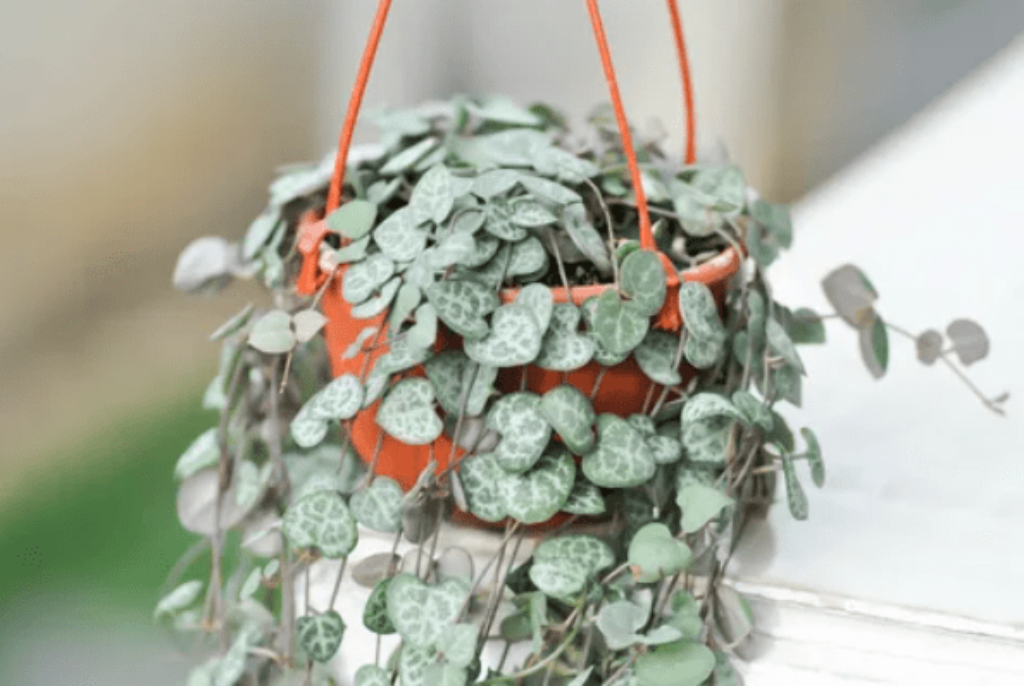
The delicate trailing plant is very tolerant and undemanding. It features pairs of tiny heart-shaped leaves that are silver-grey with a rose-pink underside. This plant looks stunning on a shelf or in a hanging planter above the stairs or window and adds a lovely touch to any lounge.
How to Grow
It thrives in most room temperatures but should be kept away from drafts and direct sunlight. It prefers moist, but not waterlogged, soil. Mist it with a water spray and place it near a window for a few hours in the morning or evening. Best site to place is Bathrooms, bedrooms, and high shelves.Ideal temperaturefor growth is 46 and 86˚F.
2. Snake plant

The lyric feature of this snake plant is its striped, sword-like leaves that twist. It’s tough and highly drought-tolerant. There are many varieties of Snake Plant available, including smaller, dwarf options.
Growing conditions
Originating from Africa, this plant can be used both indoors and outdoors. It purifies the air, providing an added benefit. .
Relatively slow-growing, it can handle low light conditions but will grow faster in brighter environments. Be sure to avoid overwatering: water once a week in summer and once a month in winter, as the plant’s growth slows down naturally during the colder months.Best location to plant is living lounge.Optimum temperature is 70 and 90˚.However, temperatures below 50°F can damage it
3. Peace lily
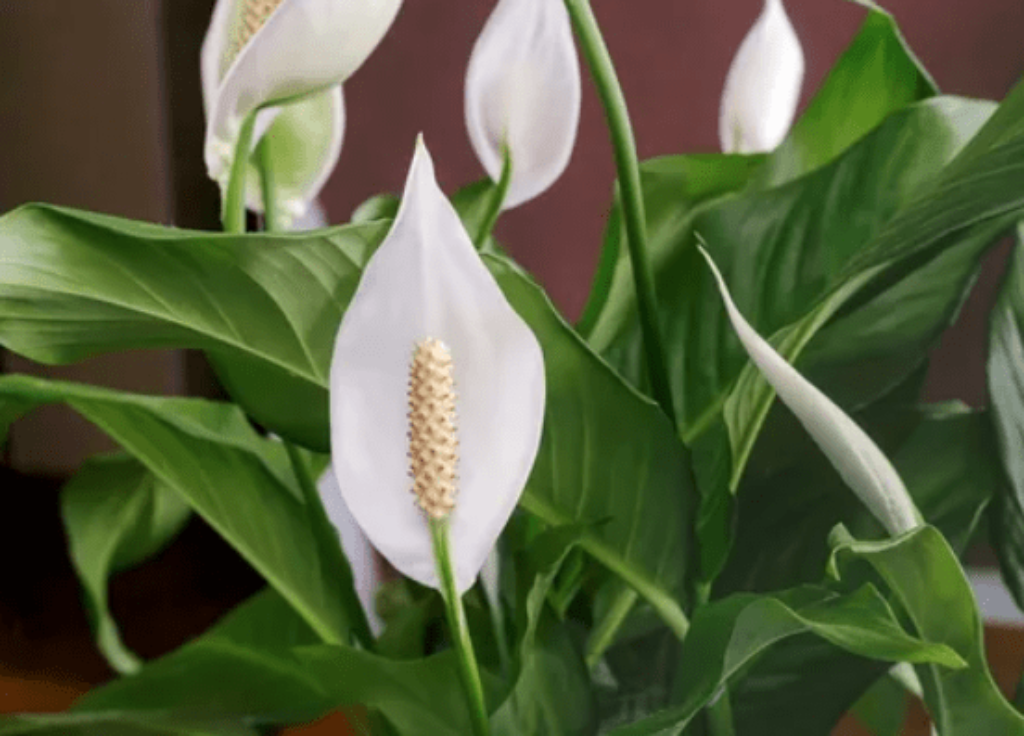
It prefers moist soil, and the leaves may droop if the plant is not adequately watered. Keep a spray bottle nearby and mist the leaves when they begin to drop. Consider setting up a self-watering system to maintain proper moisture levels.
Growin conditions
Avoid placing the plant in direct sunlight, but also ensure it doesn’t remain in too dark a spot, as both extremes can affect its health. These plants are best for drwaing and large bathrooms.Ideal temperature for its growth is 64-75˚F.
4. Succulents
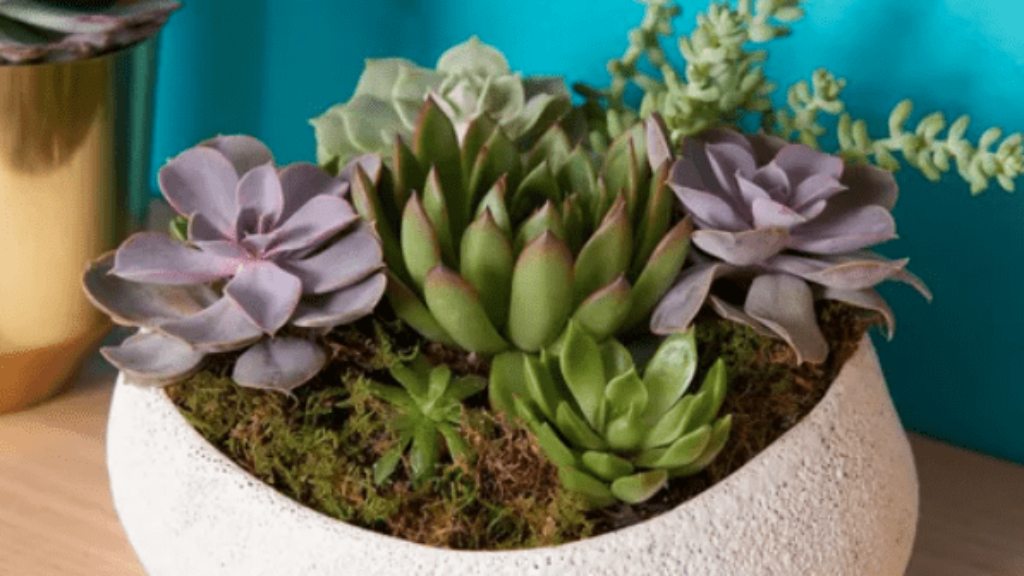
Available in various shapes, colors, and sizes, Succulents are very popular among indoor plants. Their diverse forms help enhance botanical interiors.
Low maintenance, adaptability to different conditions, and easy availability make them ideal houseplants. Originating from desert environments, succulents thrive in bright, sunny spots with minimal humidity. Planting a variety of succulents in a single pot can create a colorful display.
Avoid placing them in bathrooms or other areas with high moisture content. The ideal temperature range for their healthy growth is between 64 and 75°F.
5. Monstera deliciosa
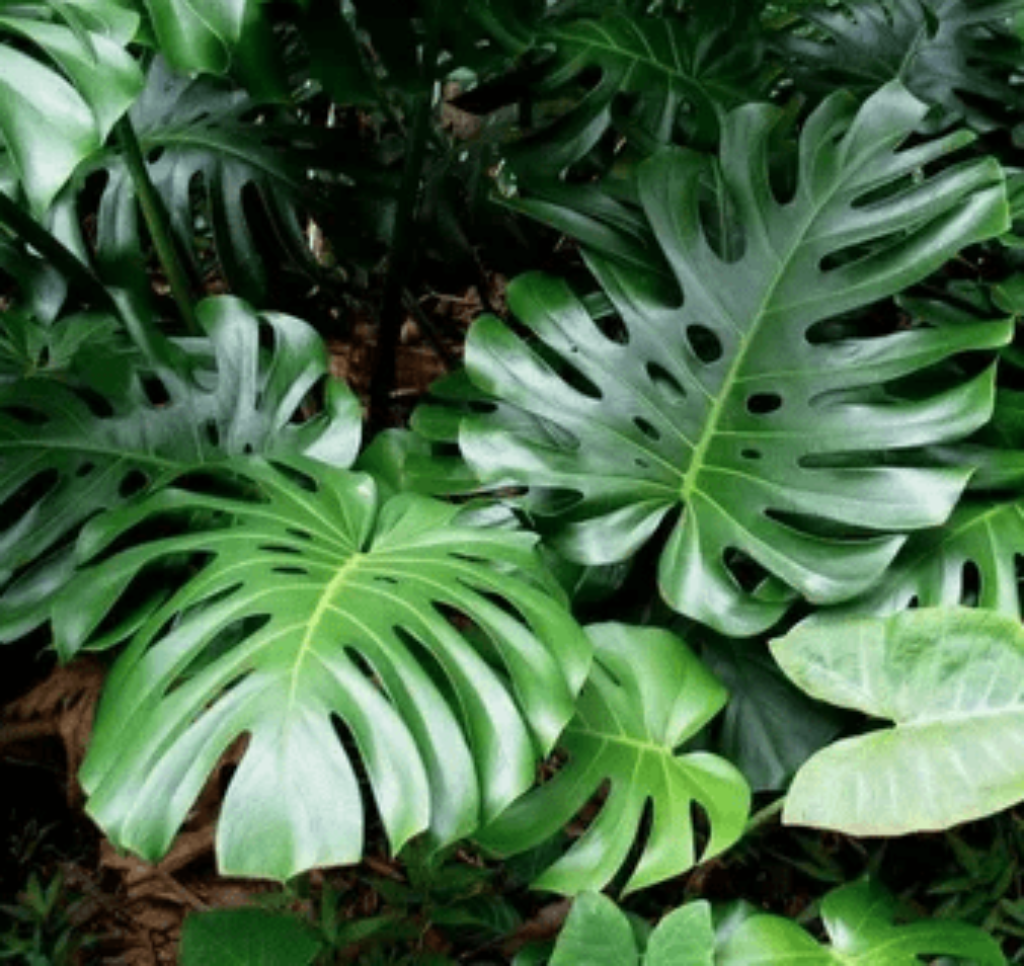
With its large leaves, this prominent climber can reach up to 80 inches in height. Originating from tropical regions, it thrives in high humidity and bright, but shaded, light.
Avoid placing it in rooms with high temperatures, such as kitchens or east-facing windows. Instead, keep it in a bathroom or bedroom where moisture levels are higher. The ideal temperature range for its growth is between 64 and 80°F.
6-Prayer plant/Peacock Plants/calatheas

The peacock plant (Calathea) is admired for its striking foliage with striped leaves in green, yellow, pink, and white. The leaves lie flat during the day and fold upwards at night, giving a prayer-like appearance.
It thrives in warm, humid conditions with temperatures around 18–24°C (64–75°F). Overwatering can lead to yellowing leaves, so make sure the soil dries out between waterings. For optimal leaf coloring, place the plant in bright, indirect light, such as an east-facing window. A sunny windowsill is an excellent location for its growth.
7. ZZ plant

The Raven ZZ plant features dark, glossy, slender leaves with distinct undulating edges and grows slowly. This variety is known for its nearly black leaves and also acts as an air purifier.
With its low maintenance needs and air-purifying properties, it is an ideal indoor plant. It thrives in shady, moist areas but can also tolerate indirect sunlight. The plant prefers being root-bound, so it doesn’t require frequent repotting. It is extremely drought-tolerant and difficult to kill, making it versatile enough to be placed anywhere in the home. The ideal temperature range for this plant is between 59 and 75°F.
8 Philodendron
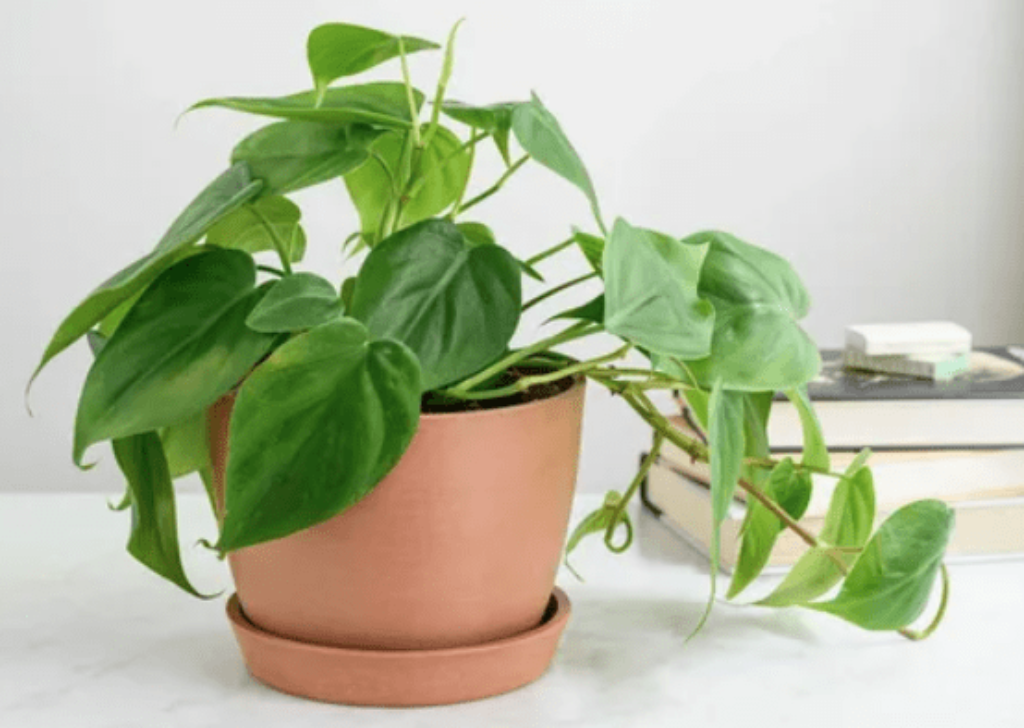
This lush green-leaved climber is often referred to as pothos. It thrives in bright light but can also adapt to shadier conditions.
These plants appreciate humidity, and high humidity environments will encourage larger leaves. To maintain lush green foliage, regularly mist the leaves with a spray bottle. Ideal spots for this plant include bathrooms and shelves. The best temperature range for optimal growth is between 60 and 75°F.
9. Pothos or Devil’s ivy
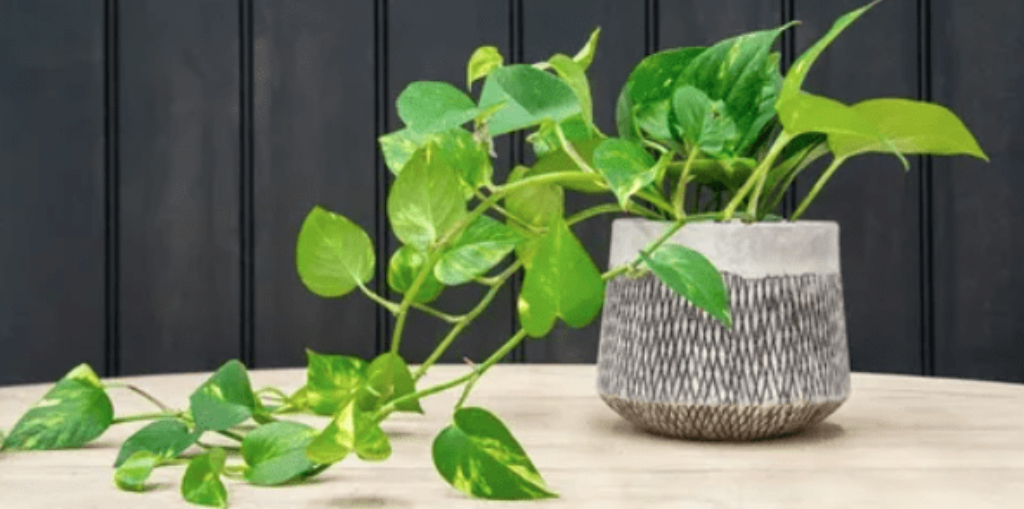
Pothos are large-leaved climbers that require low maintenance and come in various varieties. They thrive at room temperature and can even be grown in water. They also enjoy humid conditions, so regular misting with water is beneficial.
Proper watering is crucial; too much or too little can cause the leaves to yellow. Place the plant near windows or doors where it receives ample light. The ideal temperature range for pothos is between 50 and 73°F. For more information.
